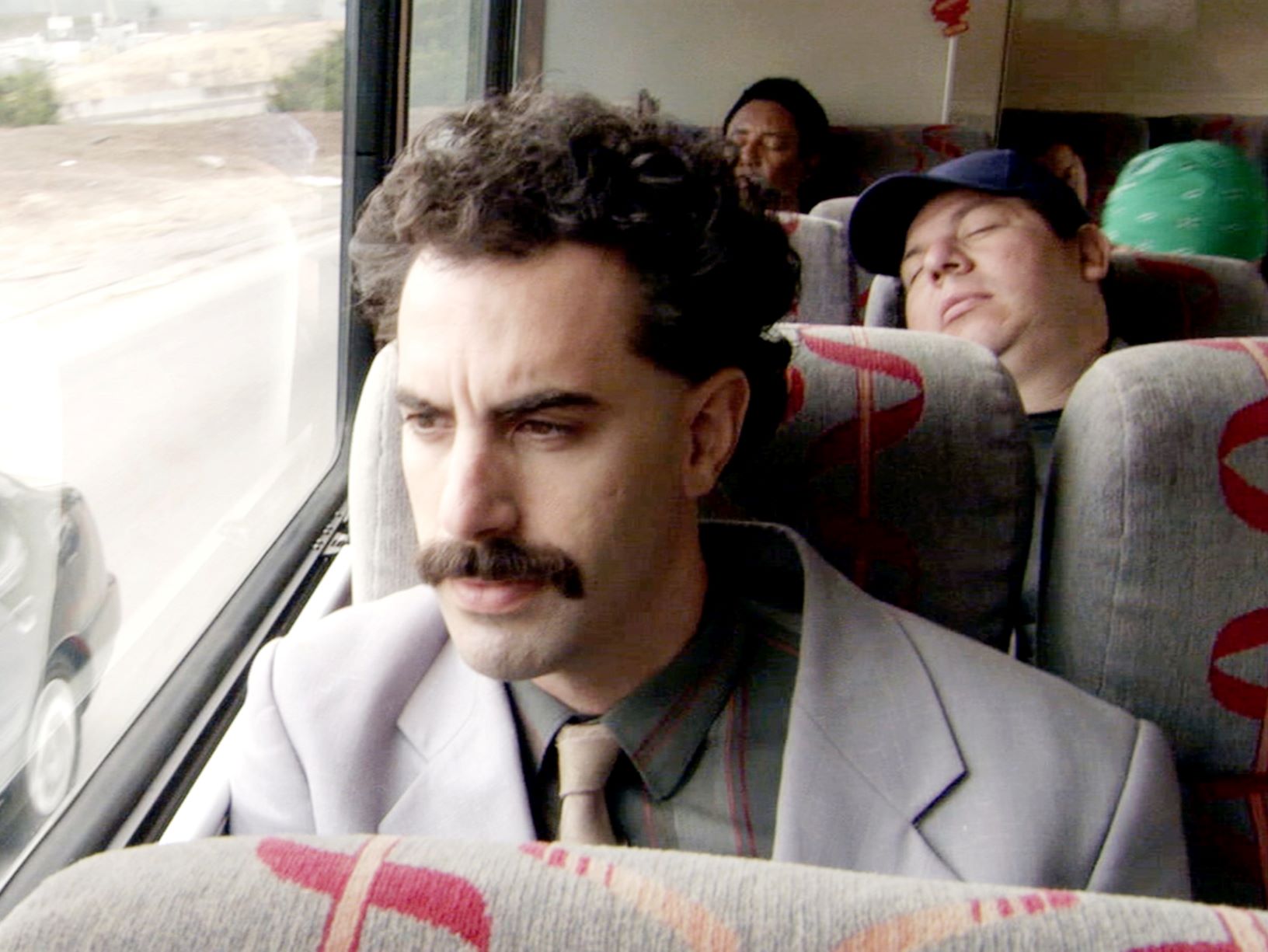Sacha Baron Cohen surprised audiences by releasing a sequel to 2006’s “Borat” on Amazon Prime. “Borat: Subsequent Moviefilm” follows Baron Cohen’s iconic character, Borat, on his journey to deliver his daughter, Tutar (Maria Bakalova), as a bribe to U.S. Vice President Mike Pence to curry favor for Borat’s home nation, Kazakhstan.
“Borat: Subsequent Moviefilm” has a clearer political angle than its predecessor. While “Borat” critiqued 2006 America under the George W. Bush administration, the sequel takes direct aim at President Donald Trump, white supremacy, QAnon and the government’s failure to mitigate the coronavirus pandemic.
“It’s the ripped-from-the-headlines relevance that makes it so fascinating, and it’s the boiling rage at current politics that makes it so bracing,” Nicholas Barber wrote for the BBC. “There aren’t many films as urgently satirical as this one. You might not want to re-watch it in a few years’ time, but you should definitely watch it now.”
“Borat: Subsequent Moviefilm” focuses on topics important to the American zeitgeist of 2020. “Borat” was broader, a movie you can still watch. The sequel may not have the same timelessness, but we won’t know until this never-ending year draws to a close.
When Baron Cohen filmed the first “Borat,” he was able to film interactions with real, clueless people — not actors — while in character, as no one knew who Borat was. He had anonymity that he does not have in 2020.
In “Borat: Subsequent Moviefilm,” Baron Cohen wears a wide variety of disguises, as many people would recognize him dressed in the boxy gray Borat suit. Most notably, he wears an incredibly convincing Donald Trump costume to crash the Conservative Political Action Conference, carrying Bakalova over his shoulder to present her as a bribe while Mike Pence gives a speech.
The scene was real. Baron Cohen broke into CPAC dressed as Trump, and until the movie’s release, no one knew it was him. The disguises and intricate gags detract from the original intent of “Borat.” Borat is a hapless reporter, likely incapable of pulling off these intense stunts. Barber wrote, “Subsequent Moviefilm is closer in spirit to Baron Cohen’s 2018 series, ‘Who Is America?’, than it is to 2006’s Borat.”
While the gags have higher stakes and perhaps less authenticity than the original film, they portray Baron Cohen’s critique of 2020 America seamlessly. The set-ups of some of the jokes feel offensive, but they lead to heartwarming and poignant moments.
Most touching is Baron Cohen’s scene with Holocaust survivor Judith Dim Evans, who passed away this year and to whom the film is dedicated. Borat goes to a synagogue dressed as every heinous Jewish stereotype in hopes of dying in the next mass shooting. It’s a quip against anti-Semitic violence in the United States, but it becomes deeper than that. Borat thinks the Holocaust never happened due to misleading information on Facebook, but Dim Evans embraces him with love and shares her story of experiencing it first-hand.
Baron Cohen broke character and told her what was going on, but in the film, this scene demonstrates his scathing condemnation of anti-Semitism. Although he initially plays into stereotypes, this allows Dim Evans to educate him in one of the few somber moments of the film.
Baron Cohen managed to stay in character for five days while quarantining with two QAnon conspiracy theorists. He also attended the March for our Rights rally with them, where he wore another elaborate disguise and convinced a group of right-wing activists to chant along to a racist song with him, demonstrating the damaging mob mentality and discriminatory beliefs of the alt-right. Some booed him, but many others agreed with his faux sentiments.
Another real scene occurred with Pastor Jonathan Bright. Tutar and Borat go to a crisis pregnancy center after Tutar accidentally swallows a plastic baby that was on top of a cupcake. Baron Cohen and Bakalova play into the gag, phrasing the incident so it sounds like Borat impregnated Tutar. Bright brushes past this and insists Tutar keep the baby, seeming to condone incest and condemn abortion in all cases. This scene allows Baron Cohen to disparage stringent pro-life arguments.
Perhaps the moment of the film that generated the most publicity was the scene of Tutar interviewing Rudy Giuliani. After their interview, Giuliani goes into the bedroom with Tutar, allows her to remove his microphone, and then lies down on the bed and appears to put his hands down his pants. He claims that he was tucking his shirt in, but it seems unlikely given how long the action took.
Giuliani acted predatorily toward Bakalova’s Tutar, who is supposed to be a teenage girl. This behavior is repugnant and another effective condemnation of the Trump administration by Baron Cohen. If this is how people close to the president treat teenage girls, it leaves you wondering what other concerning events happen in the White House.
“Borat: Subsequent Moviefilm” differs from the original, but Baron Cohen still works tirelessly to criticize racism, homophobia and misinformation in American society. Borat the character is ignorant, sexist and anti-Semitic, but by the end of the film even he returns to Kazakhstan with Tutar to help rebuild the nation in a tolerant, feminist state. Some of the pranks begin as insulting, but the narrative behind them pushes an agenda of acceptance and progressive ideals.

















